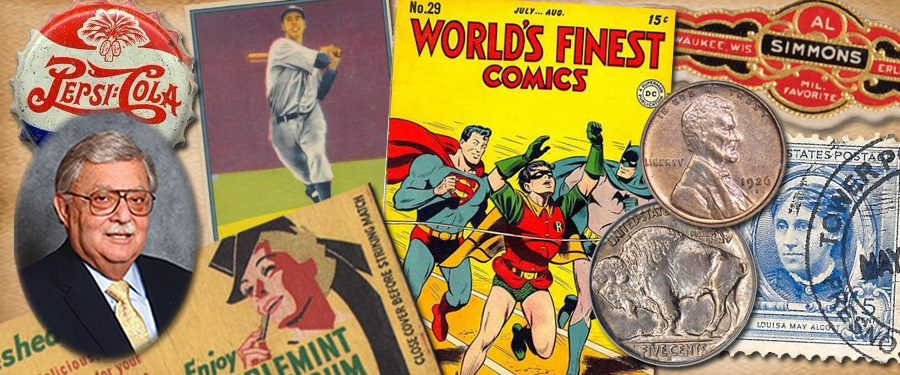
The Great Depression of the 1930s was terrible for millions of people, and many of those who had been involved in collecting, be it coins, stamps, art or anything else, disappeared from the scene. While the general public was struggling to keep food on the table and a roof over their heads, for those who were still rich, like Morgan, Hetty Green and her son, Col. E.H.R. Green, the Kennedys, Rockefellers and Hearsts, collecting was still well within their means. Some focused on art or jewels, but coins were still popular with many.
As I wrote earlier, children and teenagers often collected things that did not require any outlay of cash such as used stamps, bottle caps, cigar bands and matchbook covers. For those who had some small amount of disposable income, from allowances or odd jobs, could branch out into other collectibles. Last week I talked about the baseball cards we gathered from our chewing gum packages. Some of us also acquired another “luxury” collectible – comic books!
Though comic strips could be found in local newspapers (an inducement to buy the papers, as so many got addicted to following the daily adventures), comic books portrayed fictional characters in magazine form, including characters we still hear of today like Superman, Batman, Archie, Buck Rogers, Flash Gordon and many others. These magazines sold for 10 cents each, a big amount for us back then. We all tried to buy as many different ones as we could, and once we had read them we would trade with each other to keep up to date on all the adventures. These comic books became a obsession to collect and enjoy to entertain us in our idle time. After all, radio was rare, TV did not exist, and games cost money to buy. My generation became collectors, as we saved these thing, feeling that the old issues represented value.
We piled up used copies, which were well read and often soiled from use, but we still saved them. Again, when I moved from the Bronx after graduating High School, my mother examined my "pile of Junk" and said: “We are not taking these to our new home in Queens." She proceeded to take the comic books and throw them away. I endured the loss of another "treasure,” but as it was my parents’ house, I had to be grateful that I had a warm bed and meal that night.
After World War II, comic books experienced a revival, both as reading material and as collectibles. Some read them and threw them away; others collected them. Some of the "Heroic Characters" might die or be replaced by other champions, while others eventually made it to the movies. As I grew older, my desire to read and keep comic books diminished so they were of much less value to me. But a new generation started to read them, save them and collect them. The value of some increased while that of others dropped to almost nothing. As is often true with collectibles, time and new people in a hobby can change what is popular and what is considered valuable. This is an important part of the evolution of any hobby and keeps things “fresh” for new generations.
So my teenage collection of comic books might have grown in value by now, or it may be that the trash was the best place for them. Or, maybe if people like me had saved the old comic books instead of throwing them out, the market would be different today. The marketplace for comic books is certainly different today as now there is grading and encasing (very much like coins), making the very purpose of comic books – reading them – much more difficult. For some the pleasure of owning has changed from reading and enjoying the content to the pride of owning a desirable collectible item or an entire collection.
In my next article I will discuss what it was like to be part of a “coin” family and how that affected my personal collecting.





